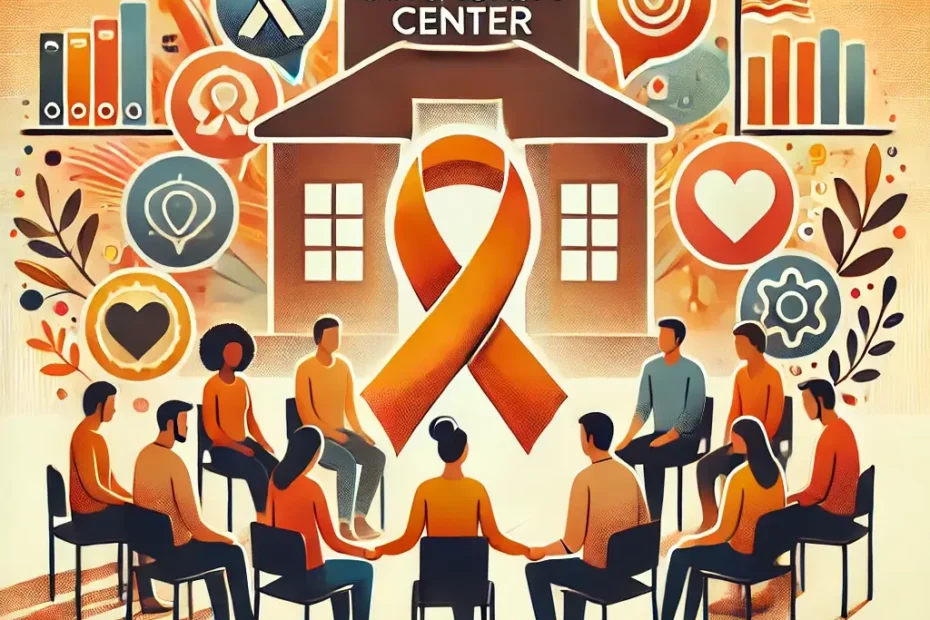Mental health affects every aspect of our lives. It influences how we think, feel, and interact with others. Many people face challenges like anxiety, depression, or trauma. They can be overwhelming. For those seeking help, therapy for mental health offers a practical and effective way to address these issues.
Also Read
Therapy offers a safe space to explore emotions and build coping skills. It helps create healthier thought patterns. There are many types of therapies for mental health, each tailored to different needs. These include widely used methods like CBT (Cognitive Behavioral Therapy) and DBT (Dialectical Behavior Therapy). More modern options, such as virtual reality therapy and online mental health platforms, are making care more accessible than ever.
This guide dives into the mental health therapy techniques used today and highlights affordable mental health care options. You will also discover how therapy improves emotional resilience and well-being. Whether you are exploring free therapy for mental health or searching for specific therapy for mental health near me, this article is designed to help you navigate your journey with confidence.
With the right support, anyone can grow and recover. Knowing the different therapy types is the first step. It will help you choose the right path for your mental wellness. Read more.
This blog post recommends knowledge-based content. However, patients must follow the instructions of a registered doctor.
1. What is Therapy for Mental Health?

Mental health therapy is a way to manage emotional and behavioral issues. It is a professional method for this. It offers a safe space to explore feelings and develop coping tools for life’s difficulties. This section explains the core aspects of therapy and why it remains a vital part of mental health care.
Defining Therapy
Therapy, or psychotherapy, is a joint effort between a therapist and a client. It aims to help people overcome challenges and improve their well-being. Mental health therapy techniques are evidence-based methods designed to address specific issues like anxiety, depression, and trauma.
Key Elements of Therapy
- Personalized Approach: Each therapy session is tailored to the individual’s needs, ensuring a focused path to recovery.
- Types of Therapies:
- Cognitive Behavioral Therapy (CBT): Focuses on identifying and changing negative thought patterns.
- Dialectical Behavior Therapy (DBT): Helps with emotional regulation and interpersonal effectiveness.
- Art and Music Therapy: Encourages self-expression through creative outlets.
Why Therapy Matters
Therapy boosts mental health. It fosters self-awareness, builds resilience, and gives tools to manage stress. Studies show that therapy leads to lasting emotional stability.
Benefits of Therapy
- Better emotional regulation.
- Improved communication skills.
- Enhanced self-esteem and confidence.
Table: Common Therapy Techniques and Their Uses
| Therapy Type | Focus Area | Ideal For |
|---|---|---|
| CBT | Thoughts and behaviors | Anxiety, depression |
| DBT | Emotional regulation | Borderline personality disorder |
| Group Therapy | Peer support | Social skills, addiction recovery |
| Art Therapy | Creative self-expression | Trauma, stress |
Link to Actionable Resource
For more information on therapy techniques, visit Mental Health America.
2. Types of Therapy for Mental Health

Mental health therapy does not provide a solution that works for everyone. There are various types of therapies for mental health, each tailored to address specific challenges. Understanding these approaches can help individuals make informed choices about their care.
1. Cognitive Behavioral Therapy (CBT)
CBT is one of the most common and effective mental health therapy techniques. It helps individuals identify negative thought patterns and replace them with healthier ones.
- Ideal For: Anxiety, depression, and phobias.
- How It Works: Focuses on the relationships between thoughts, feelings, and behaviors.
2. Dialectical Behavior Therapy (DBT)
DBT builds on CBT but emphasizes emotional regulation and mindfulness.
- Ideal For: Borderline personality disorder and emotional dysregulation.
- Core Elements:
- Mindfulness.
- Distress tolerance.
3. Group Therapy
Group therapy is a small group of people with similar issues. They work together under a therapist’s guidance.
- Ideal For: Addiction recovery, social anxiety, and relationship issues.
- Benefits:
- Build social support.
- Provides diverse perspectives.
4. Holistic Therapies
Holistic approaches focus on treating the whole person—mind, body, and spirit.
- Examples:
- Art Therapy: Uses creative expression for healing.
- Mindfulness Therapy: Enhances awareness and reduces stress.
Comparison Chart: Popular Therapy Types
| Therapy Type | Focus Area | Ideal For |
|---|---|---|
| Cognitive Behavioral | Thoughts and behaviors | Anxiety, depression |
| Dialectical Behavioral | Emotional regulation | Personality disorders |
| Group Therapy | Peer support | Addiction recovery, social anxiety |
| Art Therapy | Creative self-expression | Trauma, stress |
Key Takeaway
Each therapy type offers unique benefits. Choosing the right one depends on individual needs and goals. For more resources, visit Mental Health Resources.
3. Benefits of Therapy for Mental Health

Therapy offers countless benefits for those facing mental health challenges. It offers a safe space to address emotions, behaviors, and thoughts that affect daily life. Through therapy, individuals can experience growth, resilience, and lasting change.
1. Emotional Resilience
Therapy equips individuals with tools to manage emotions effectively. Mindfulness techniques, used in CBT and DBT, help reduce stress and anxiety.
- Example: Mindfulness exercises can reduce cortisol levels, promoting a sense of calm.
2. Improved Communication Skills
Many mental health challenges stem from difficulties in expressing thoughts and feelings. Therapy provides strategies to communicate more effectively.
- Key Skills Gained:
- Active listening.
- Assertiveness in expressing needs.
3. Enhanced Relationships
Better communication and emotional regulation naturally improve relationships. Family and couples therapy specifically focuses on repairing and strengthening bonds.
- Fact: Studies show that individuals in therapy report a 70% improvement in interpersonal relationships.
4. Greater Self-Awareness
Therapy helps individuals understand their triggers, behaviors, and thought patterns. This awareness fosters personal growth and empowers decision-making.
Chart: Key Benefits of Therapy
| Benefit | Impact on Mental Health | Example Therapy |
|---|---|---|
| Emotional Regulation | Reduces anxiety and stress | CBT, DBT |
| Improved Communication | Strengthens relationships | Couples Therapy, Family Therapy |
| Self-Awareness | Encourages personal growth | Psychodynamic Therapy |
| Problem-Solving Skills | Promotes resilience in challenges | Solution-Focused Therapy |
How Therapy Helps Daily Life
Therapy isn’t just for crises; it builds skills that apply to daily life. For example:
- Managing Workplace Stress: Tools like time management and boundary-setting.
- Coping with Life Changes: Adjusting to new roles, such as parenthood or career transitions.
Explore Further
To learn more about the benefits of therapy, visit Psychology Today’s Guide to Therapy.
4. Emerging Trends in Mental Health Therapy
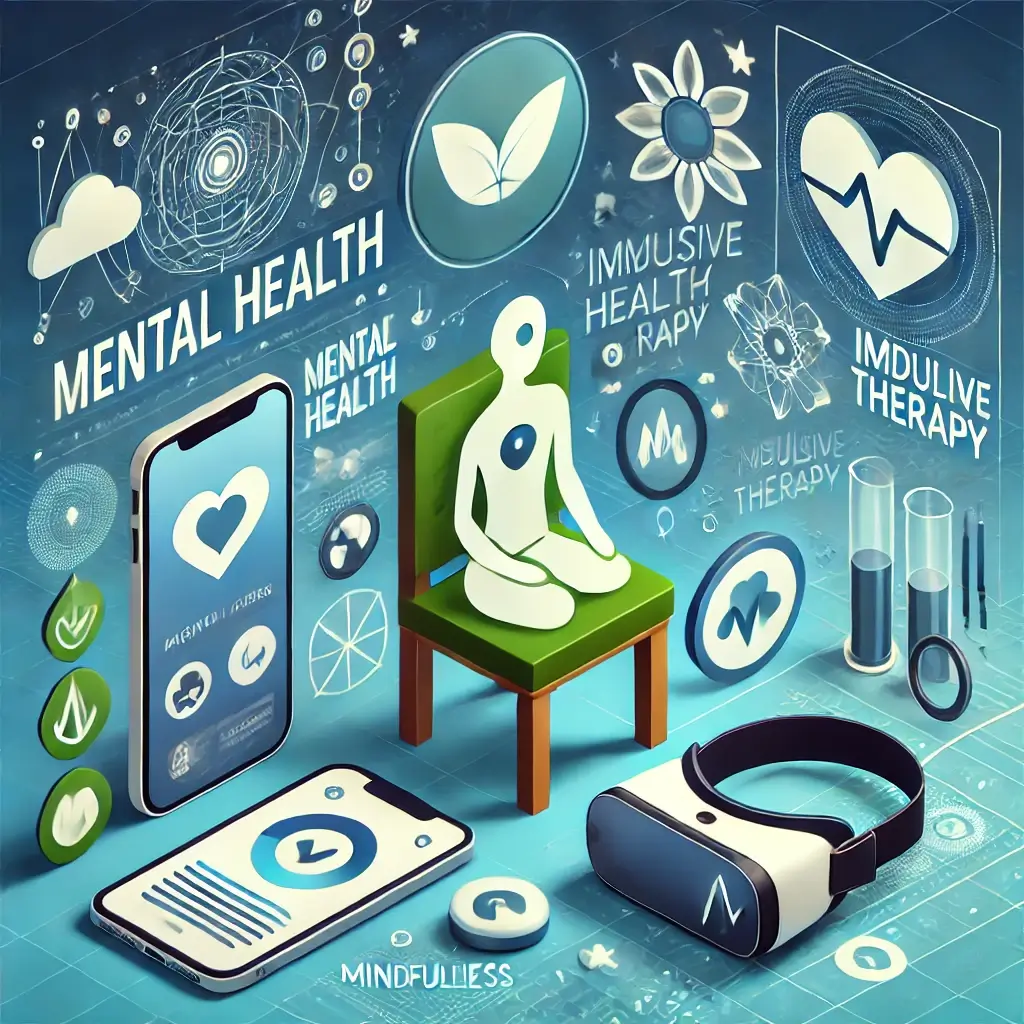
Mental health therapy is evolving. New technologies and methods aim to make it more accessible and effective. These trends are reshaping the way individuals seek and receive mental health support.
1. Teletherapy and Online Platforms
Teletherapy lets clients connect with licensed professionals from home.
- Benefits:
- Convenient scheduling.
- Wider access to specialists.
- Popular Platforms: BetterHelp, Talkspace.
2. Virtual Reality Therapy
Virtual Reality (VR) is revolutionizing exposure therapy for anxiety, PTSD, and phobias.
- How It Works: VR creates immersive environments for safe and controlled exposure.
- Example: Veterans use VR to confront and process traumatic experiences.
3. Mental Health Apps
Apps like Calm and Headspace provide tools for mindfulness, mood tracking, and stress management.
- Advantages:
- Affordable and accessible.
- Ideal for on-the-go support.
4. Wearable Technology
Devices like smartwatches now track emotional and physiological metrics.
- Features:
- Heart rate monitoring for stress detection.
- Notifications for mindfulness breaks.
Comparison Chart: Traditional vs. Emerging Therapies
| Aspect | Traditional Therapy | Emerging Trends |
|---|---|---|
| Accessibility | In-person sessions | Remote and app-based |
| Technology Use | Minimal | Advanced tools like VR and apps |
| Cost | Higher in some cases | Affordable or subscription-based |
Challenges to Adoption
While these trends are promising, they come with challenges:
- Privacy concerns regarding data from apps and wearables.
- Dependence on technology access and literacy.
Explore Further
Discover innovative solutions at NIMH Trends in Therapy.
5. How to Choose the Right Therapy for Mental Health

Selecting the best therapy for mental health can feel overwhelming with so many options available. However, understanding your needs and exploring available resources can make this process easier. This section provides a step-by-step guide to help you choose the right path.
1. Assess Your Needs
Begin by identifying the specific challenges you’re facing.
- Questions to Ask Yourself:
- Am I struggling with anxiety, depression, or trauma?
- Do I prefer one-on-one sessions, group therapy, or a holistic approach?
2. Research Therapy Types
Explore different types of therapies for mental health, such as CBT, DBT, and holistic therapies like mindfulness.
- Example: CBT focuses on reshaping negative thought patterns, making it ideal for anxiety and depression.
3. Consider Accessibility
Determine what fits your lifestyle and budget.
- Options:
- In-person therapy: Great for those who value face-to-face interaction.
- Teletherapy: Ideal for convenience and flexibility.
4. Consult a Professional
Speak with a licensed therapist for guidance. They can recommend therapies based on your mental health assessment.
- Tip: Online directories like Psychology Today can help you find professionals in your area.
Comparison Chart: Factors to Consider When Choosing Therapy
| Factor | What to Look For | Examples |
|---|---|---|
| Personal Needs | Type of issue or preference | Anxiety → CBT, Trauma → DBT |
| Accessibility | Location, cost, time | Teletherapy, free therapy options |
| Therapist’s Expertise | Specializations | Child therapy, PTSD, LGBTQ+ support |
5. Explore Affordable Options
Therapy doesn’t have to break the bank. Many services offer sliding-scale fees, community support groups, and free mental health apps.
- Examples: BetterHelp for online therapy, NAMI for local resources.
6. Evaluate and Adjust
Your first choice of therapy may not always be the perfect fit, and that’s okay. Reassess periodically and adjust as needed.
Take Action Today
Choosing the right therapy is an empowering step toward better mental health. For more information, visit Mental Health America’s Therapy Guide.
6. Overcoming Barriers to Mental Health Care
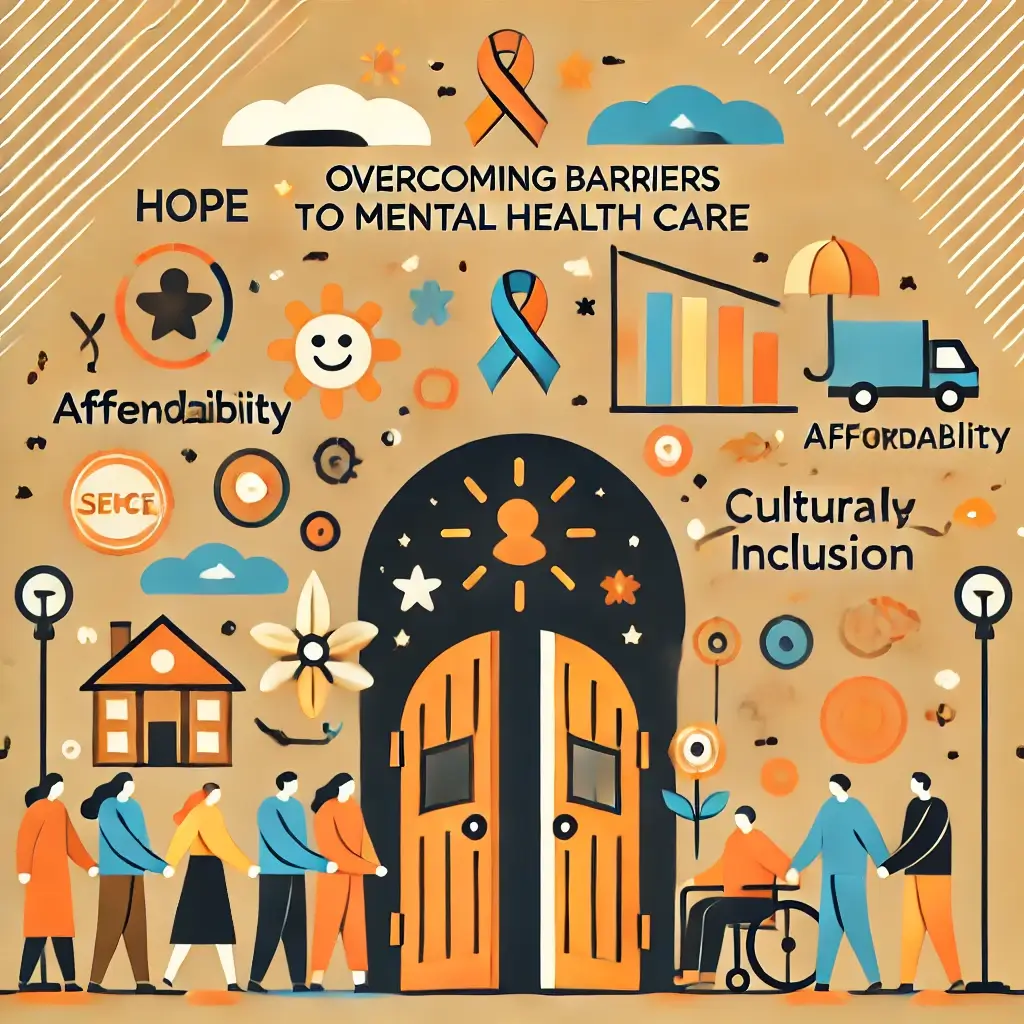
Access to mental health care is vital. Yet, many face barriers that prevent them from getting help. By addressing these barriers, we can make a more inclusive, accessible system for all.
1. Financial Challenges
Cost is a major obstacle for many seeking therapy. Without insurance or adequate coverage, professional care may seem out of reach.
- Solutions:
- Sliding-scale fees are offered by therapists based on income.
- Free resources are available through community organizations and non-profits like NAMI.
2. Stigma Around Mental Health
The stigma surrounding mental health often discourages individuals from seeking help. This fear of judgment can delay or prevent necessary treatment.
- How to Address Stigma:
- Promote education about mental health to foster understanding.
- Encourage open conversations in families, schools, and workplaces.
3. Accessibility and Availability
In rural or underserved areas, finding a therapist may be difficult.
- Solutions:
- Teletherapy platforms connect individuals with professionals remotely.
- Mobile apps provide tools for self-guided care.
Comparison Chart: Barriers and Solutions
| Barrier | Challenge | Solution |
|---|---|---|
| Cost | High therapy fees | Sliding-scale options, free resources |
| Stigma | Fear of judgment | Awareness campaigns, peer support |
| Accessibility | Limited providers in remote areas | Teletherapy, mental health apps |
4. Cultural and Language Barriers
Cultural norms and language differences can make it harder for some individuals to access care.
- Strategies for Inclusion:
- Seek therapists with cultural competence training.
- Explore bilingual therapy services or interpreters.
5. Lack of Awareness
Some people are unaware of the options available to them.
- Raising Awareness:
- Use social media campaigns to share resources.
- Partner with schools and local organizations to distribute information.
Key Takeaway
Breaking down barriers requires a collaborative effort between communities, healthcare providers, and policymakers. By providing affordable options, reducing stigma, and improving accessibility, mental health care can reach those who need it most.
For more resources on overcoming barriers, visit MentalHealth.gov.
Here is the image representing community-based mental health support, highlighting inclusivity and collaboration through group activities and symbols of care.
7. Community-Based Support for Mental Health
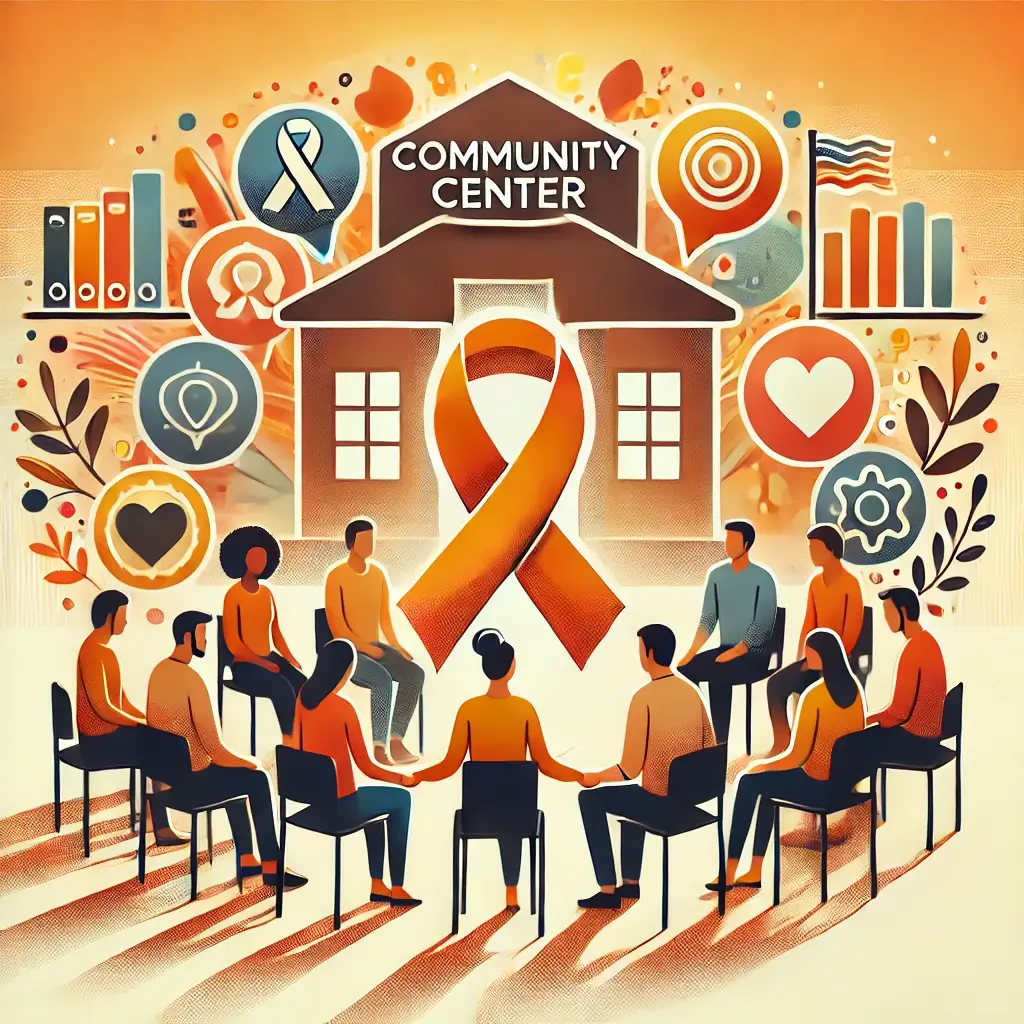
Mental health care is not about therapy. Community support is vital for recovery and well-being. They offer support, shared experiences, and services for those with mental health issues.
1. The Role of Support Groups
Support groups bring people together to share experiences and learn from one another. They create a safe space to discuss challenges without fear of judgment.
- Examples:
- Peer support for addiction recovery.
- Groups focused on anxiety and depression.
2. Non-Profit Organizations
Nonprofits are essential in bridging gaps in mental health care. NAMI and Mental Health America provide resources. These include free screenings, support lines, and educational materials.
- Local Options:
- Many cities have non-profits tailored to specific communities.
3. Online Communities
Virtual communities are now popular. They offer support to those in remote areas. Forums, social media groups, and online therapy platforms provide 24/7 engagement.
- Popular Platforms:
- Reddit’s mental health threads.
- Facebook support groups.
Table: Types of Community-Based Support
| Type | Focus Area | Examples |
|---|---|---|
| Support Groups | Peer support | Alcoholics Anonymous, NAMI groups |
| Non-Profits | Free/low-cost services | Mental Health America |
| Online Communities | Virtual peer engagement | Reddit, Facebook groups |
4. Benefits of Community Support
- Accessibility: Many community resources are free or low-cost.
- Shared Experiences: Knowing others face similar challenges reduces feelings of isolation.
- Continuous Engagement: Support is often available outside of therapy hours.
Resources to Explore
5. How to Find Community Resources
- Check local libraries and community centers for group listings.
- Use online directories like Mental Health America’s resource locator.
Community-based support provides a foundation for lasting mental health improvement. Together, communities can foster understanding, resilience, and hope.
More Tips: Exploring Therapy Options for Mental Health
Mental health therapy provides a path to healing and personal growth. It helps people manage emotional struggles and build better coping mechanisms. With so many types of therapies for mental health, finding the right approach may feel overwhelming, but it starts with understanding your options.
Common Therapy Methods
Not possible to remove the adverb. This approach helps identify and replace negative thought patterns with healthier perspectives. It is particularly effective for treating anxiety and depression. Another popular option, DBT, focuses on managing intense emotions and building interpersonal skills. DBT benefits individuals dealing with mood disorders or borderline personality disorder.
If you prefer group settings, group therapy for mental health can offer immense support. These sessions bring people together who share similar experiences, creating a sense of connection and belonging. For those who want to explore all possibilities, a therapy modalities cheat sheet can provide a quick overview of what each method offers.
Emerging and Innovative Therapies
Modern advancements have introduced exciting new options like virtual reality therapy for mental health. This new method uses immersive environments to treat phobias, trauma, and social anxiety in a controlled setting.
Additionally, teletherapy has revolutionized accessibility, allowing clients to connect with therapists from their homes. Online therapy options like BetterHelp and Talkspace are affordable, flexible solutions for busy lifestyles or those in remote areas.
Holistic approaches also play a growing role. Many people benefit from integrating mindfulness tools for mental health, meditation, and yoga into their care routines. These practices often complement traditional therapies, enhancing relaxation and self-awareness.
Overcoming Barriers to Care
Barriers like cost and stigma often discourage people from seeking help. However, affordable mental health care options, including free therapy for mental health, are widely available. Nonprofits, community clinics, and online platforms provide accessible solutions. Support groups provide judgment-free spaces to share stories and find strength in others.
If privacy or fear of judgment is a concern, mental health apps can be a helpful starting point. These tools provide stress management exercises, journaling prompts, and guided meditations. They aim to ease your journey into therapy.
Making the Right Choice
Choosing the right therapy depends on your personal needs. Start by considering the issues you’re facing. For example, CBT for mental health is effective for thought-related challenges, while holistic methods focus on overall well-being. Teletherapy and online therapy options are great for those seeking convenience and flexibility.
Key Takeaway
Therapy offers solutions for everyone, no matter the challenges they face. By exploring options like holistic mental health treatments, community-based mental health support, or virtual reality therapy, you can find the right path to healing. Start small—whether with a therapy modalities cheat sheet, a local support group, or a trusted therapist. Remember, the first step is the most important one.
8. FAQs About Mental Health Therapy
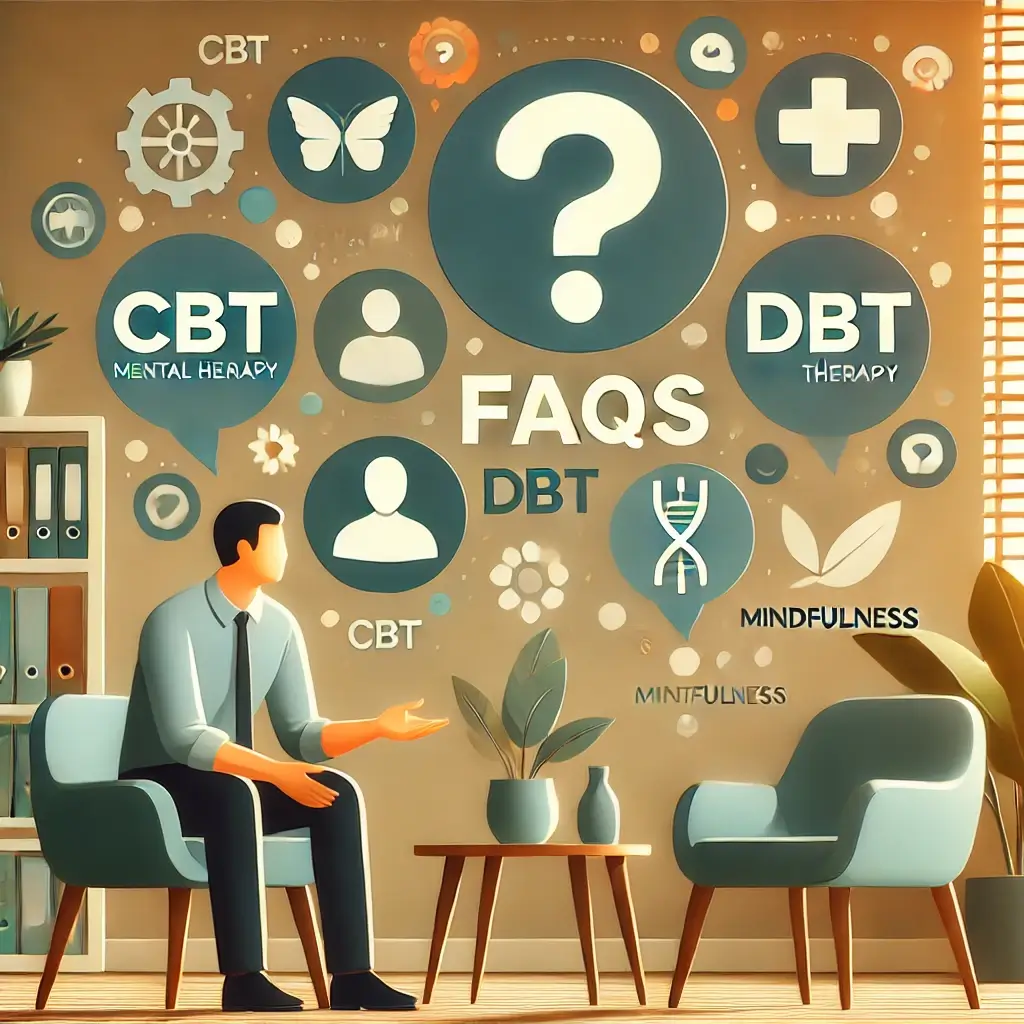
Many people have questions about mental health therapy, especially when exploring options for the first time. This section addresses some of the most common queries to provide clarity and confidence.
1. What type of therapy is best for mental health?
The best therapy depends on individual needs. Cognitive Behavioral Therapy (CBT) is highly effective for anxiety and depression. For emotional regulation, Dialectical Behavior Therapy (DBT) is recommended. Exploring options with a professional is key to finding the right fit.
2. What are the four major types of therapy?
The four major types include:
- Cognitive Behavioral Therapy (CBT): Focuses on thought and behavior patterns.
- Psychodynamic Therapy: Explores unconscious influences.
- Humanistic Therapy: Encourages personal growth.
- Integrative Therapy: Combines multiple approaches.
3. How long does therapy take to work?
The timeline varies based on the type of therapy and individual goals. Some people notice improvements in as few as 6–8 sessions, while others benefit from long-term therapy.
Table: Therapy Types and Their Focus
| Therapy Type | Focus Area | Ideal For |
|---|---|---|
| CBT | Thought patterns | Anxiety, depression |
| DBT | Emotional regulation | Borderline personality disorder |
| Psychodynamic Therapy | Past experiences | Trauma, deep emotional issues |
| Integrative Therapy | Tailored approaches | Complex mental health needs |
4. Are there free or affordable therapy options?
Yes, many non-profits and online platforms offer free or low-cost therapy. Explore apps like BetterHelp or community clinics for affordable options.
5. Can therapy be done online?
Absolutely. Teletherapy has become a popular and effective option, allowing clients to access care from home. Platforms like Talkspace and BetterHelp are leading choices.
External Resources
9. Conclusion and Call-to-Action

Mental health therapy is a journey. It empowers people to overcome challenges and lead fulfilling lives. Whether you try traditional therapies, like CBT, or newer ones, like VR therapy, the key is to take the first step toward care.
The information provided in this guide offers a comprehensive look at the types of therapies for mental health and practical solutions to common barriers. Remember, support is available through community-based programs, online platforms, and non-profits. Understand your needs and explore your options. Then, you can make informed decisions that align with your goals.
Take Action Today
Your mental health matters. If you or someone you know is considering therapy, reach out to a trusted professional or explore resources like Mental Health America. Start small—download a mental health app, join a support group, or consult a therapist.
Affiliate Resources:
Together, we can break the stigma and build a world where mental health care is accessible to all. Take the first step and embrace the journey toward healing and growth today.
